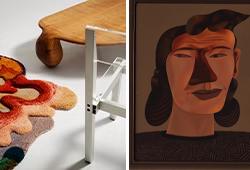Oscar Björck
A fisherman in his boat at sea
Signed O. Björck. Canvas 60 x 50.5 cm. Period gilded frame.
Alkuperä - Provenienssi
Private collection Belgium until 2019
Muut tiedot
This previously unrecorded work, painted at Skagen between 1882-84, is a major addition to Oscar Björck’s œuvre. The subject brings to mind Björck’s monumental picture Launching the boat, from 1884, measuring 160 x 194.5 cm., his most famous picture painted in Skagen which was exhibited at Charlottenborg in 1886 (Skagens Museum) (fig. 1) ( T. Hedberg, Oscar Björck, 1930, p. 34, illustrated; exh. cat., Nationalmuseum, Stockholm, 1880-tal i nordiskt måleri, 25 October 1985-6 January 1996, No. 65, illustrated). A preparatory drawing for the picture is in Nationalmuseum, Stockholm (fig. 2).
Amongst Swedish artists’ who visited the Scandinavian colony of painters at Skagen, Björck is by far the one who spent the longest time there. Björck’s stay in Skagen lasted between 1882 to 1884. He was encouraged to visit Skagen by P. S. Krøyer whom he had met in Paris during the winter 1881-82. At the time, Krøyer himself had never visited Skagen. Krøyer arrived at Skagen only a month before Björck.
Björck and Krøyer developed a close relationship and they lived together in the Old Garden House where Michael and Anna Ancher previously had lived. Michael Ancher had kept his studio, so Krøyer and Björck converted an old grain-drying warehouse in Brøndum’s old garden into a studio which they shared. Krøyers’s and Björck’s close friendship is witnessed by the many portraits they painted of each other. In August 1882, Krøyer depicted Björck painting on the beach of Skagen (Skagens Museum) and in 1883 he portrayed Björck and Eilif Petersen in the process of portraying Georg Brandes, the famous critic and scholar (Randers Museum). In 1884, Krøyer and Björck both painted their portraits for the famous frieze-like series of portraits of painters in Skagen formerly in Brøndrums Hotel (Skagens Museum) (M. Bøgh Jensen, Bröndum´s Dining Room. In gratitude for happy days. 2011, pp. 114-115, 124-125, both illustrated) (figs. 3-4). The same year, Krøyer depicted Björck painting in Brøndrum’s old garden (Skagens Museum) (fig. 5). In May-June 1884, Björck and Krøyer visited the artists’ colony in Grez-sur-Loing south of Paris. Krøyer there painted his famous pastel depicting the artists having breakfast together in Hotel Chêvillon, in which Björck is included (Prince Eugen’s Waldemarsudde, Stockholm (fig 6). The previous year, Krøyer had painted a similar picture depicting the artists’ in Skagen having luncheon at Brøndoms Hotel in Skagen, in which he also had included Oscar Björck (Skagens Museum) (fig. 7).
Michael Ancher had arrived at Skagen long before Kröyer and Björck and had become known for his depictions of local fishermen. In a letter dated 5 November 1882 to Krøyer, Ancher express indignation that Krøyer had begun painting similar subject matters, claiming that he had exclusive right to them. He acknowledged Krøyers’s skills but compares him with the rich man who owned many sheep but slaughtered the poor man’s only lamb (E. Fabritius, Anna og Michael Ancher. Breve og fotografier, 2018, Vol I, p. 511, letter no. 381). Oscar Björck, a foreigner on limited stay in Skagen, did not share Ancher’s criticism.
In 1884 Krøyer begun work on his famous painting Hip, Hip, Hurray!, which depicts a social gathering in Anna and Michal Anchers’s garden in Skagen by members of the "guild" of Skagen Painters, as Krøyer referred to them (Gothenburg Art Museum) (fig. 8). Krøyer did not complete the picture until 1888, partly because he wanted an up-to-date portrait of Björck to be included in the painting. That summer Björck revisited Skagen on Krøyer’s request, where he modelled for the picture. This would be Björck’s last visit to Skagen.
Björck’s stay in Skagen and his contact with the Skagen painters had a crucial influence on his art, and it was at Skagen he painted some of his best works. In 1929, in an extensive letter to Karl Madsen, the famous Danish art critic, whom the same year had been appointed the first Director of Skagens’s Museum, Björck acknowledge his artistic debt to both Krøyer and Michael Ancher (K. Voss, Skagenmålarna, 1990, pp. 217-19).






































































